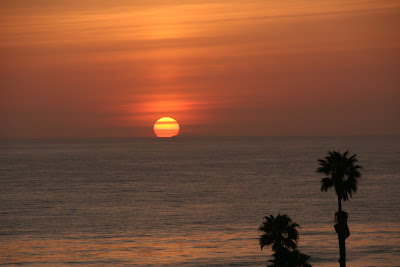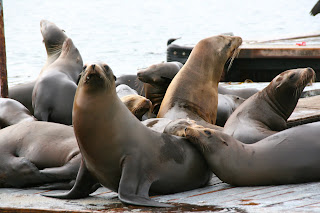It is almost criminal that it took me 38 years to finally get my butt over to Oregon. I guess I was still holding out for a big northwest trip to see the national parks, explore the pinot noirs and see the cool volcanoes. (Mt St Helens erupted on my birthday in 1980. I was 6 years old and this had a massive impression on me. For the nerds amongst you, some great footage of that time can be found here: you tube mt st helens)
When Jesse moved to Eugene in the early-mid 90s I heard
tales of early grunge/coffee barista/snowboarding lifestyle. He would go on and on and on about how
gorgeous the forests were, how pristine the skiing (boarding) was. I was intrigued, but did not go out and
visit, being a poor student and all.
Then Katy moved there in mid noughties, and she kept banging
her head in frustration when we would say we wanted to try all those wonderful
wines, but yet hadn’t committed a spot in our social calendar to make the
trip. (Her house is a mere 30 minute
drive to the wine country.)
Even though our US road trip is supposed to be more serious
and goal oriented (finding a place to call home), how could we pass up the
chance to check out Oregon when we were within shouting distance? We could not.
We did not.
Now that I’ve been there,
what did I think? Well, it’s very
green. And very wet. And there is a lot more than just green forests across the state. And the people are very nice. And the food and wine are fantastic. And everyone is so much more down to earth
than you’d expect. And there really are
some crazy vegan-99%ers who sound and look exactly like those characters on
Portlandia. And the rest of the state is
way more redneck than you can imagine.
(Thank you Dad for teaching me to fish or I’d have had nothing to talk
about with these people).
 |
| The Columia River Gorge |
 |
| Driving across Oregon - would you have guessed it was OR? |
 |
| Another Unexpected Delightful Side of Oregon |
It’s really too bad about the weather – we stayed in both
Eugene and Portland which proved to be very nice respectfully small and medium
sized cities. They had nice houses, nice
shops, nice restaurants, but damn, that weather. It is astonishingly similar to the UK – a
weather forecast with 50 shades of grey – no wonder the books are set in
Portland/Seattle. In this case Grey
isn’t the S&M husband, but the abusive clouds and pounding rain.
 |
| TrackTown USA 2012 Olympic Trials in Eugene |
How can the folks at Nike stand to have their headquarters there? Surely they should be somewhere awesomely
sunny to enjoy the sporty weather. It
seems more like a home for London Fog trenchcoats and Gore-Tex than a home for
track shoes. If you don’t know the
story, Nike has its origins in the track program at the University of Oregon
(as does Animal House, but I don’t think those things are related) – where ex
students and current coaches were playing around with waffle irons to find the
right grip for the new tracks of the 1960s -- a company was formed, the rest is
history. What I don’t understand is why,
when they first opened an office in Santa Monica, they chose to HQ themselves
in Beaverton in the shadow of Oregon’s clouds rather than the shadow of
California waves.
Maybe it was the healthy produce? The whole state is like a giant fruit bowl –
excellent growing conditions for the world’s best strawberries (hoods), more
cherry varieties than you ever knew existed, blueberries, huckleberries, more
salad ingredients and micro greens than you can imagine, and yes, you even
drive through the grass seed capital of the world on route 5 between Eugene and
the capital, Salem. Pass over the
allergy medication, you’ll need a few handfuls a day.
 Maybe it was the wine?
The wine really is first class. I
don’t know why the Willamette region doesn’t have more praise and world
reknown. Some of the best pinot noirs
and chardonnays come from the region.
This is surprising to me since the climate is a million miles away from
a burgundian one, but these varietals taste different here in any case. Pinots taste like those cherries and berries
the state is famous for. And before you
go pronouncing that wrong, it’s will-am-it (dammit), not will-yam-ette. You get corrected a lot in or-E-gun.
Maybe it was the wine?
The wine really is first class. I
don’t know why the Willamette region doesn’t have more praise and world
reknown. Some of the best pinot noirs
and chardonnays come from the region.
This is surprising to me since the climate is a million miles away from
a burgundian one, but these varietals taste different here in any case. Pinots taste like those cherries and berries
the state is famous for. And before you
go pronouncing that wrong, it’s will-am-it (dammit), not will-yam-ette. You get corrected a lot in or-E-gun.  Maybe it was the environment? Raining, or snowing, or those 2 months a year
when the sun comes out, those Cascade mountains really are something else. When you read about them the word ‘prominence’
comes up a lot. What makes these
mountains so spectacular is that 1) they are actually very steep snow capped
volcanoes (11k+) and 2) they spring up out of nowhere with no other mountains
around to distract the eye. They give
you hiking, mountain biking, skiing, snowboarding, climbing activities and then
wooosh the Colombia river snakes through and gives you windsurfing, kite
boarding and kayaking. Put in a golf
course here, raft some whitewater there, and oh put a few hundred miles of bike
paths in too – and wow, is it easy to be out and active here. Just make sure you grab that rain gear…because
no matter what you do, it will be wet.
Maybe it was the environment? Raining, or snowing, or those 2 months a year
when the sun comes out, those Cascade mountains really are something else. When you read about them the word ‘prominence’
comes up a lot. What makes these
mountains so spectacular is that 1) they are actually very steep snow capped
volcanoes (11k+) and 2) they spring up out of nowhere with no other mountains
around to distract the eye. They give
you hiking, mountain biking, skiing, snowboarding, climbing activities and then
wooosh the Colombia river snakes through and gives you windsurfing, kite
boarding and kayaking. Put in a golf
course here, raft some whitewater there, and oh put a few hundred miles of bike
paths in too – and wow, is it easy to be out and active here. Just make sure you grab that rain gear…because
no matter what you do, it will be wet. 














































